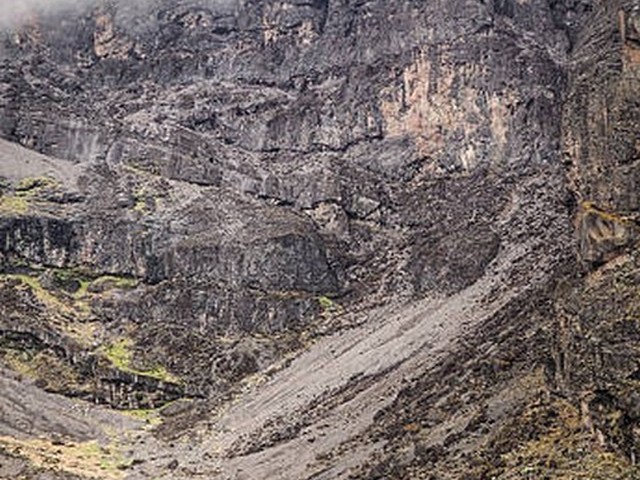Discovering The Natural Beauty Of Kilimanjaro Plateau
Welcome to the majestic world of Mount Kilimanjaro, where the beauty of nature is on grand display and every step on its rich soil tells a story of Earth’s magnificence. As the highest peak in Africa, Kilimanjaro is more than just a mountain; it’s a monumental journey through diverse ecosystems, culminating on the stunning Kilimanjaro Plateau. Join us, Kilimanjaro Centre for Trekking and Ecotourism (KCTE), as we guide you through this spectacular natural paradise, promising the experience of a lifetime.
The Lure of Kilimanjaro: Why It Captivates So Many
Mount Kilimanjaro is not only famous for its towering height but also for its breathtaking landscapes and the diversity of wildlife and flora that it supports. The journey to its plateau offers trekkers a unique combination of challenge and reward, a symphony of sights, sounds, and feelings. The allure of conquering its summit, coupled with the magnetic beauty of its surroundings, draws adventurers and nature lovers from all corners of the globe.
Journey Through the Ecosystems
The Rainforest – A Verdant Beginning
Your trek begins in the lush, humid rainforest zone, where the thick foliage forms a green canopy above, and the air is alive with the calls of exotic birds and monkeys. This dense belt is your first encounter with Kilimanjaro’s ecological complexity.
The Heath and Moorland – Where Giants Rest
Ascending further, the landscape transforms into heath and moorland, offering sweeping views and a chance to walk amongst the otherworldly giant lobelias and senecios. This zone presents a dramatic change from the rainforest, with its open, dusty space and cooler temperatures.
The Alpine Desert – The Lunar Experience
As you climb higher, the air thins and the vegetation sparse, making way for the alpine desert. This area might feel like walking on another planet with its wide, open spaces and minimal signs of life. However, the solitude and silence of the desert hold their own stark beauty.
The Kilimanjaro Plateau – Crown of the Mountain
Finally, the plateau of Kilimanjaro is a realm unlike any other. Here, above the cloud line, the landscape is stark yet strikingly beautiful, with vast ice fields and the famous snow-capped peaks in the distance. It’s a place where the sky touches the earth, where you feel on top of the world in every sense of the phrase.
Flora and Fauna: Kilimanjaro’s Natural Inhabitants
The ecological diversity of Kilimanjaro supports a wide range of wildlife and plant species, adapted to thrive at various altitudes. From the colobus monkeys and forest elephants of the lower slopes to the alpine chats and lammergeyers of the higher altitudes, the mountain is a vital habitat for many creatures. Botanically, Kilimanjaro is renowned for its unique vegetation, including the giant groundsels and lobelias, which appear like guardians of the mountain wilderness.
Best Seasons to Visit
To fully experience the natural beauty of Kilimanjaro Plateau, timing your trek is crucial. The best times to visit are during the dry seasons, from late June to October and from late December to mid-March. During these periods, the skies are clearer, and the trekking conditions are more favorable.
Preparing for Your Trek
A successful climb to Kilimanjaro Plateau requires proper preparation, both physically and mentally. Training for endurance, familiarizing yourself with high-altitude conditions, and packing the right gear are all essential steps in your journey. At KCTE, we provide comprehensive support and guidance to ensure you are thoroughly prepared for the adventure ahead.
Why Choose KCTE for Your Kilimanjaro Adventure?
At Kilimanjaro Centre for Trekking and Ecotourism (KCTE), we are more than just tour operators; we are custodians of the mountain and its traditions. Our expert guides, who are natives of the region, bring a personal and informed touch to every trek. We believe in sustainable tourism and work tirelessly to preserve the natural beauty of Kilimanjaro for future generations. Choosing KCTE means choosing a partner who values safety, sustainability, and an authentic experience.
Frequently Asked Questions
Q: How fit do I need to be to climb Kilimanjaro?
A: Climbing Kilimanjaro is challenging but achievable with the right preparation. It requires good physical health and endurance. We recommend starting a fitness regime at least three months before your trip.
Q: What should I pack for the trek?
A: Essential items include sturdy hiking boots, thermal clothing, a warm sleeping bag, sun protection, and a hydration pack. We provide a detailed packing list when you book your trek with us.
Q: Can I experience wildlife during the trek?
A: Yes, the lower slopes of Kilimanjaro are rich in wildlife. While the higher zones have fewer animals, the unique bird species and occasional sightings of higher altitude fauna can be expected.
Ready to Explore the Kilimanjaro Plateau?
If you’re inspired to experience the natural wonders of Kilimanjaro Plateau, there’s no better time to start planning your adventure. At Kilimanjaro Centre for Trekking and Ecotourism, we’re here to help you every step of the way. Book your climb with us and be part of an unforgettable journey that not only challenges you physically but also connects you deeply with nature. Discover the beauty, the majesty, and the awe-inspiring resilience of Kilimanjaro with KCTE. Join us, and let the mountains move you.




